Kitsune udon is a traditional udon noodle soup that hits the spot whenever I’m in the mood for comfort food that’s not too heavy. The noodles are served in a delicate, salty, and umami broth and is topped with sweet inari age pouches. It’s delicious, comforting, and only takes 15 minutes to make from start to finish!
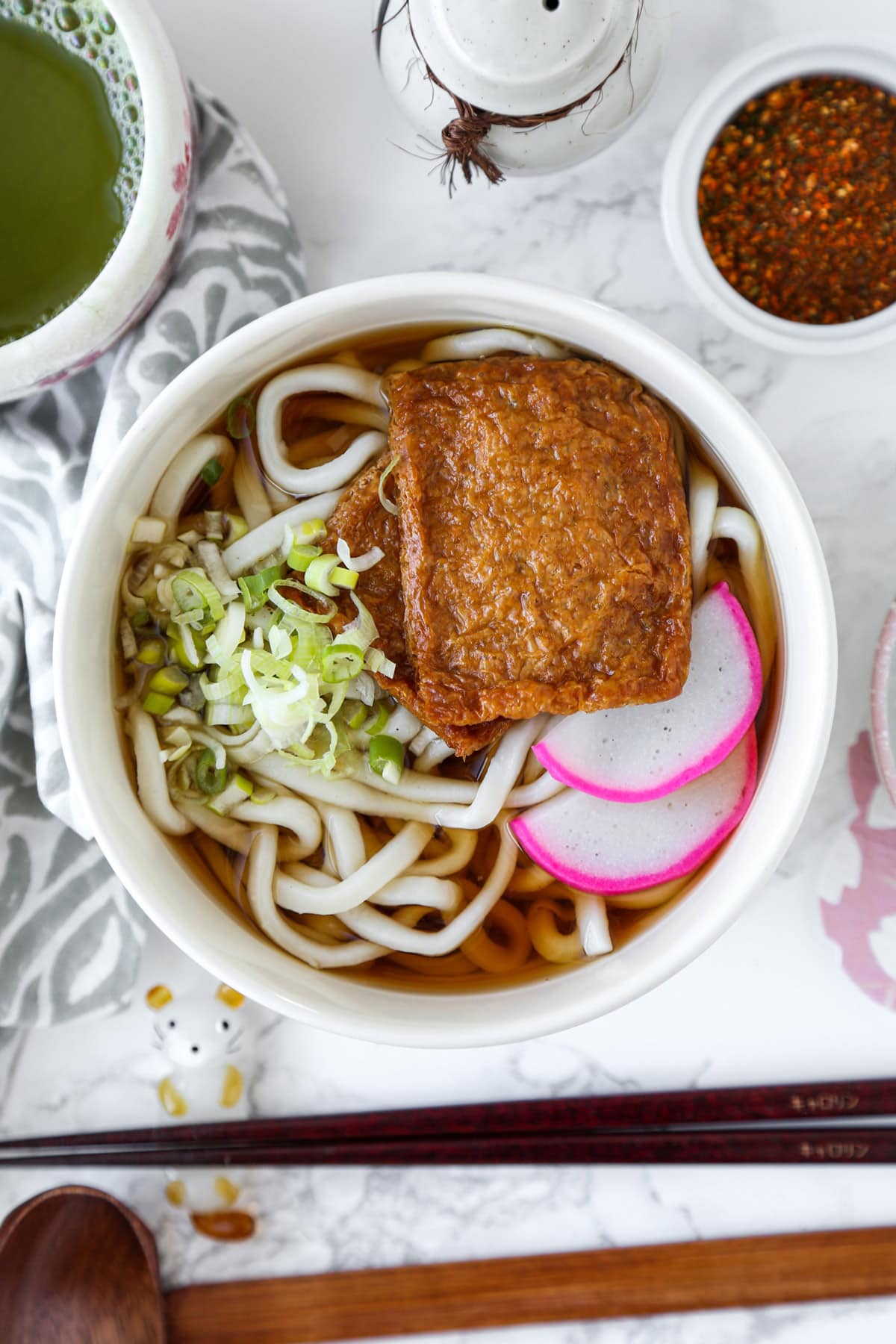
What is Kitsune Udon?
Kitsune udon, which literally mean fox udon, is a simple soup made of udon noodles served with a dashi based broth, and topped with seasoned deep fried tofu pouches (inari age), narutomaki fish cakes, and scallions. It’s one of the most popular udon dishes that can be enjoyed all year long.
While it’s most often served as a hot dish, during the summer months, kitsune udon can also be served cold with a chilled dashi broth. The dish is called hiyashi kitsune udon (冷やしきつねうどん) in Japanese.
Why is it Called Kitsune Udon?
No one knows exactly how this dish got its name but there are a couple of ideas floating around that could explain its origin.
The first one is based on a famous Japanese fable that mentions the love that foxes have for aburaage. Since this dish is topped with deep fried tofu pouches, some speculate that may be the reason why it was named after them.
The other theory is that the color of the tofu pouches is similar to the color of a fox’s fur. In Japan, you will often hear people mention that something must be cooked until it is the color of kitsune, when giving cooking directions.
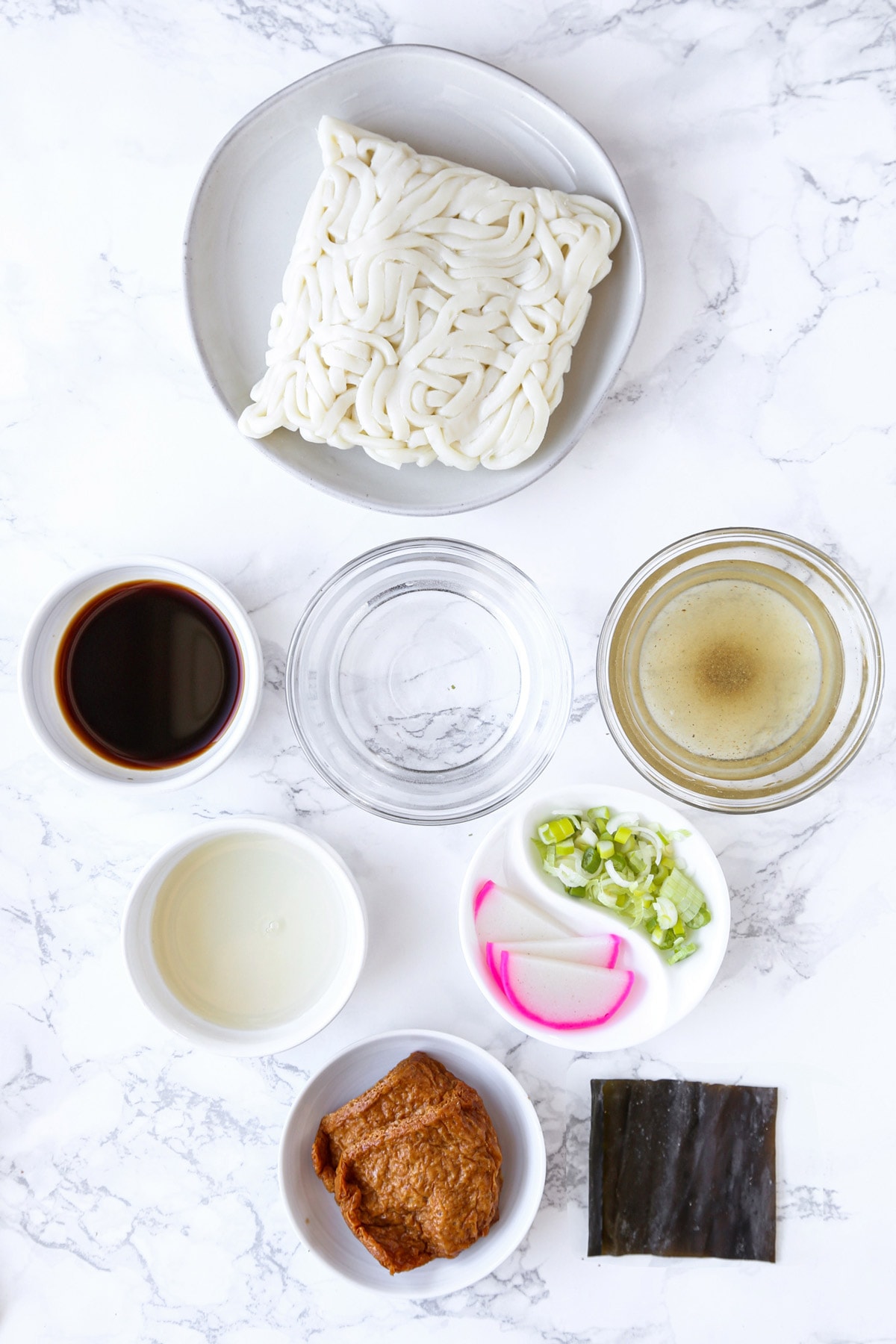
Ingredients for Kitsune Udon
- Udon noodles: Fresh or frozen udon noodles are better than dry ones because of their thicker and chewier texture, which plays an important role in the success of the dish.
- Broth: Udon broth is generally milder than the broth that is served with ramen or soba. For this recipe I’m using a mix of kombu, dashi, soy sauce, mirin, and salt.
- Inari age: Inari age are deep fried tofu pouches that have been cooked in a mixture of soy sauce, sugar, and mirin. Typically you will find one large piece of inari age as a topping for the noodle soup but you can use as many a you like. You can buy them at the store or online (I got mine on Amazon), or you can scroll down to learn how to make inari age.
- Scallions: Chopped scallions deliver a refreshing and slightly sweet crunch to the dish. I mention using two for this recipe but feel free to use more. I personally find that you can never use too many scallions!
- Narutomaki: Those are the swirly pink and white fish cakes you see in anime cartoon food and many Japanese soup noodle dishes. I couldn’t find the traditional narutomaki design but these ones taste just the same.
- Additional optional toppings: If you would like to dress up your noodles even more, add a sheet of nori and sprinkle some ichimi powder (red chili flakes).
Kitchen Tools Needed
- Chef’s knife to prep the ingredients
- Cutting board
- 2 pots (one for making the broth, the other to boil the noodles)
- Strainer
- Serving bowls
- Chopsticks
- Spoons
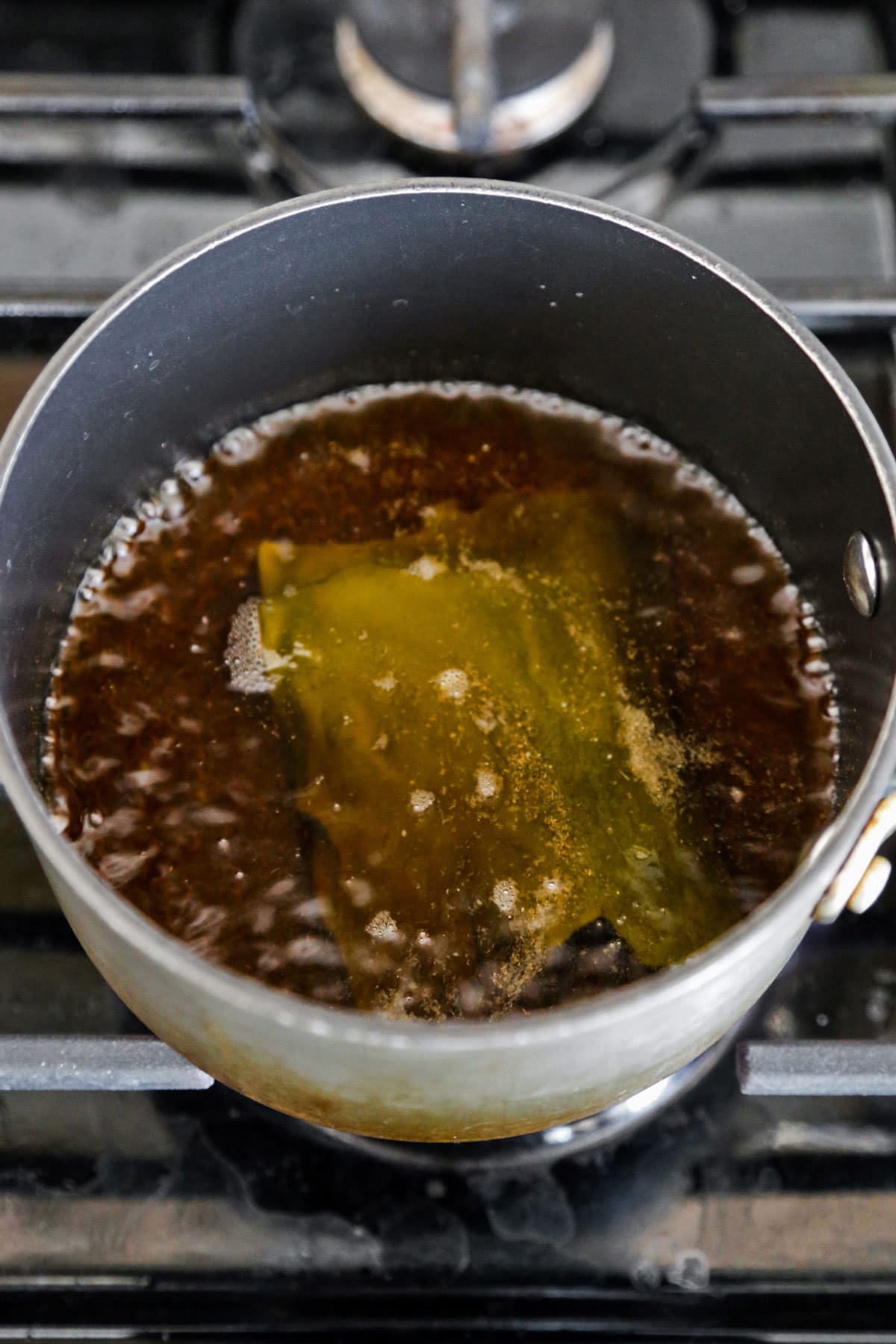
How to Make Kitsune Udon
- Gather all of your kitchen tools and cooking ingredients.
- Prep your toppings and set them aside.
- Add all of the ingredients for the dashi broth to a pot and let sit for 15 minutes.
- Turn the heat to medium high and bring the broth to a boil. When the broth is boiling, take the kombu out and discard it.
- Turn the heat down to low, cover, and cook for 5 minutes.
- Meanwhile, bring another pot of water to boil. Add the udon noodles and cook according to the directions on the package. Usually, fresh and frozen udon noodles take 2-3 minutes to cook.
- Drain the noodles and divide them among two bowls.
- Pour the dashi broth and top with inari age, scallions, and narutomaki. Enjoy!
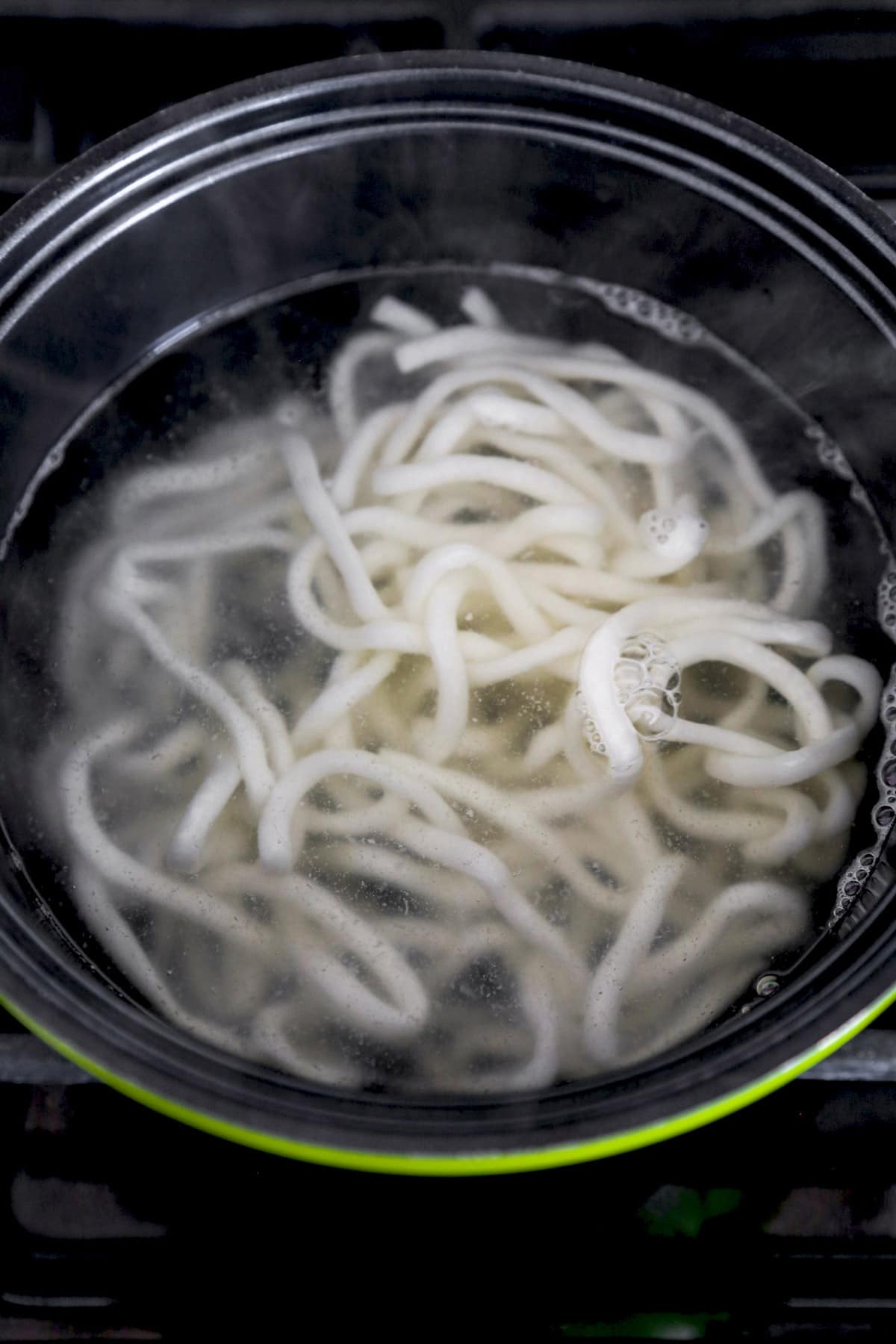
How to Make Inari age
To make inari age you will need:
- 4-6 aburaage (deep fried tofu pouches) which you can find at your local Japanese or Asian grocery store
- 200ml dashi
- 2 tablespoons soy sauce
- 2 tablespoon sugar
- 1 tablespoon sake
- 2 tablespoon water
Directions:
- Cut the aburaage in half and set aside.
- Mix the remaining ingredients in a sauce pan and add the aburaage.
- Bring to a boil and lower the heat to a bubbling simmer. Cover and simmer for 15 minutes.
- Turn the heat off and transfer the aburaage to a plate. Let cool to room temperature and use.
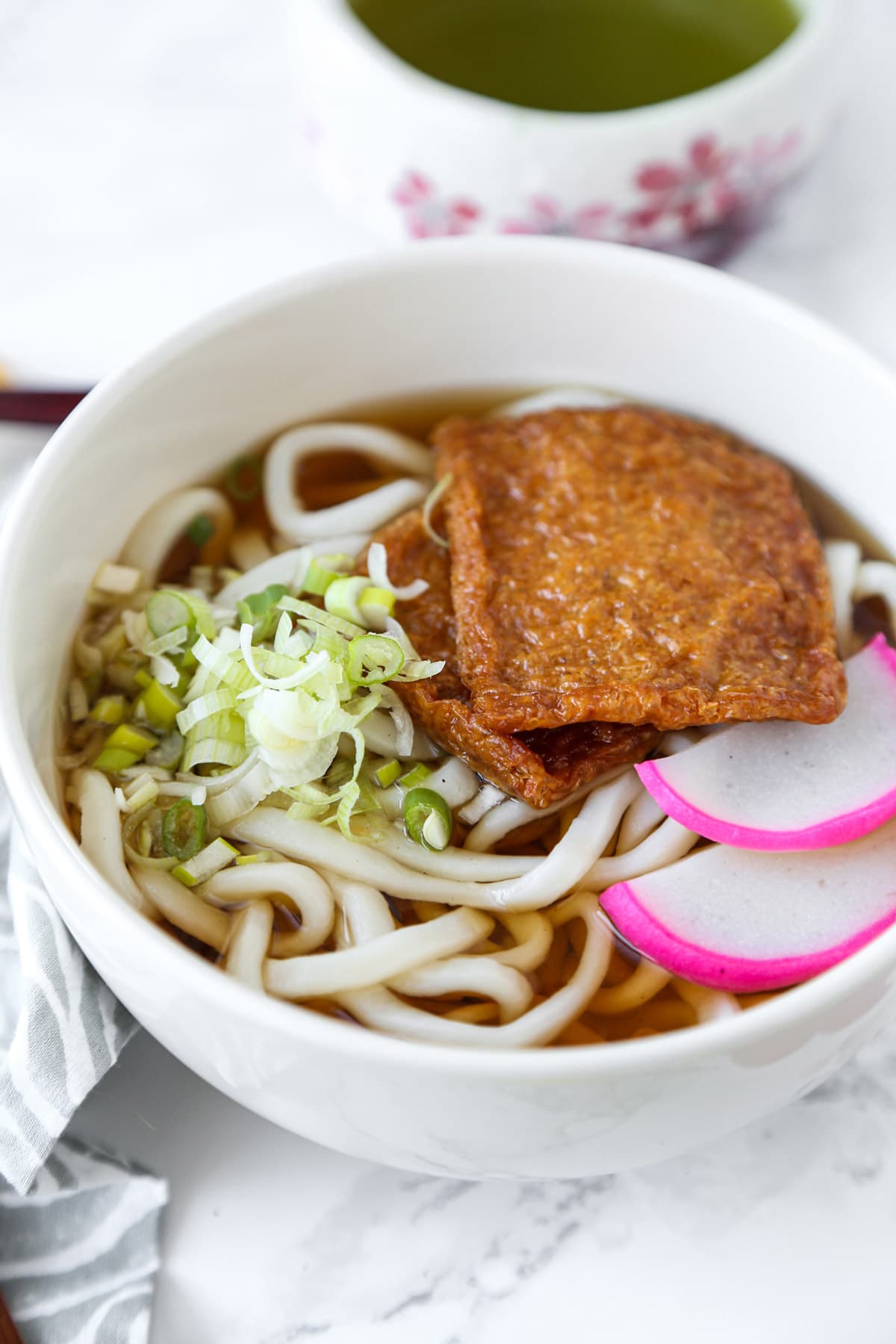
Make it Vegan
You can easily make a vegan version of kitsune udon since dashi made from bonito flakes can easily be switched to kombu dashi, which is made from seaweed.
You can either buy kombu dashi in granulated form, which is sold just like regular dashi, or you can make it from scratch. I personally prefer the granulated form because it’s more flavorful and is ready to use.
Making vegan dashi from scratch is very easy:
Cut a 6″x 6″ piece of kombu and add it to a liter of water (4 cups). Let it soak for at least 3 hours or overnight for a stronger flavor. Take the kombu out and store your vegan dashi in a jar or container with a lid. It will keep for up to 5 days, refrigerated.
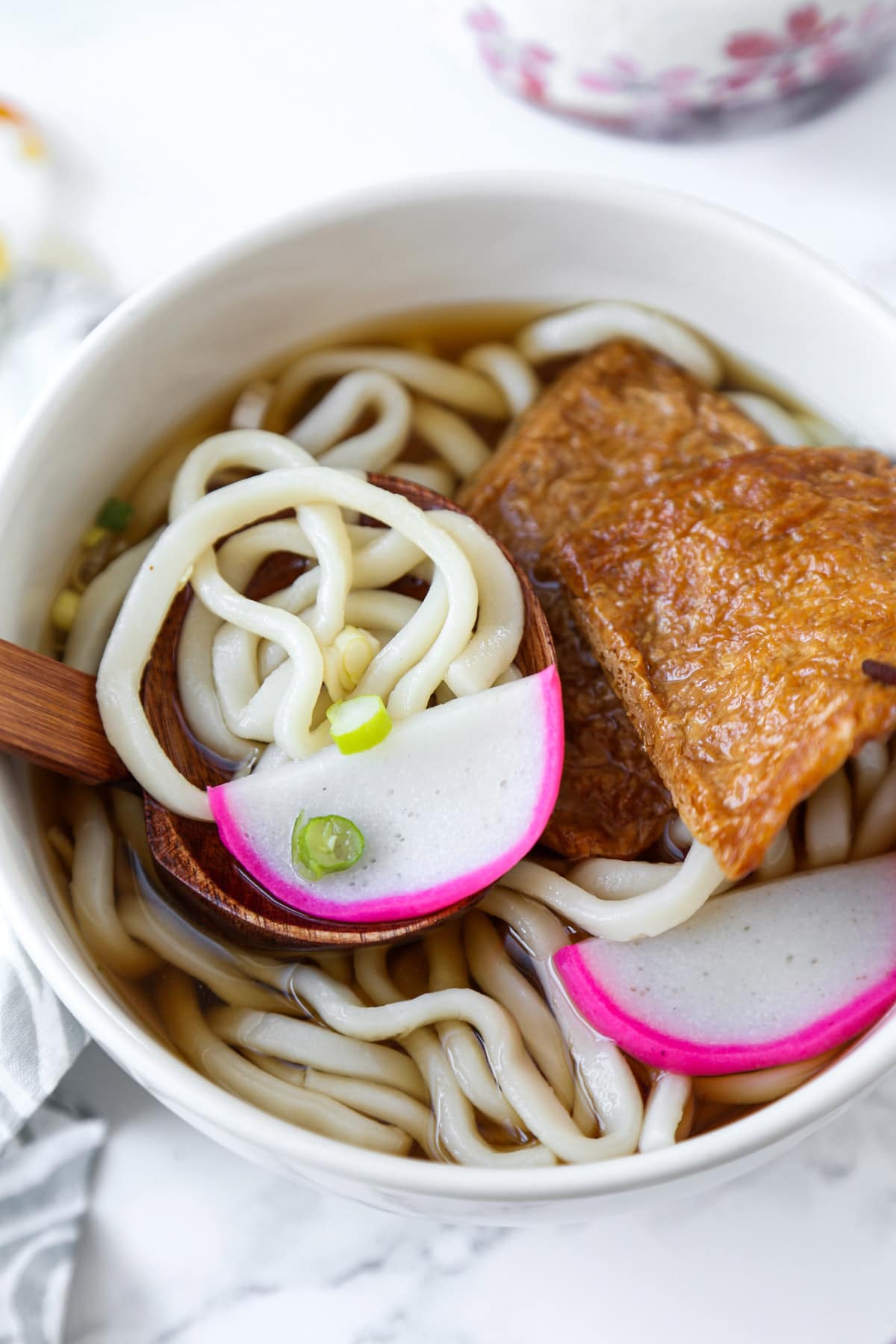
What to Serve with Kitsune Udon
Kitsune udon is a fairly light dish to eat so I recommend serving it with a couple of sides if you are having it as a main. Some of my favorite Japanese side dishes to serve with this delicious noodle soup are:
- Tamagoyaki
- Maki sushi
- Iceberg or romaine salad with Japanese carrot ginger dressing
- Edamame with soy and sesame sauce
- Nasu dengaku
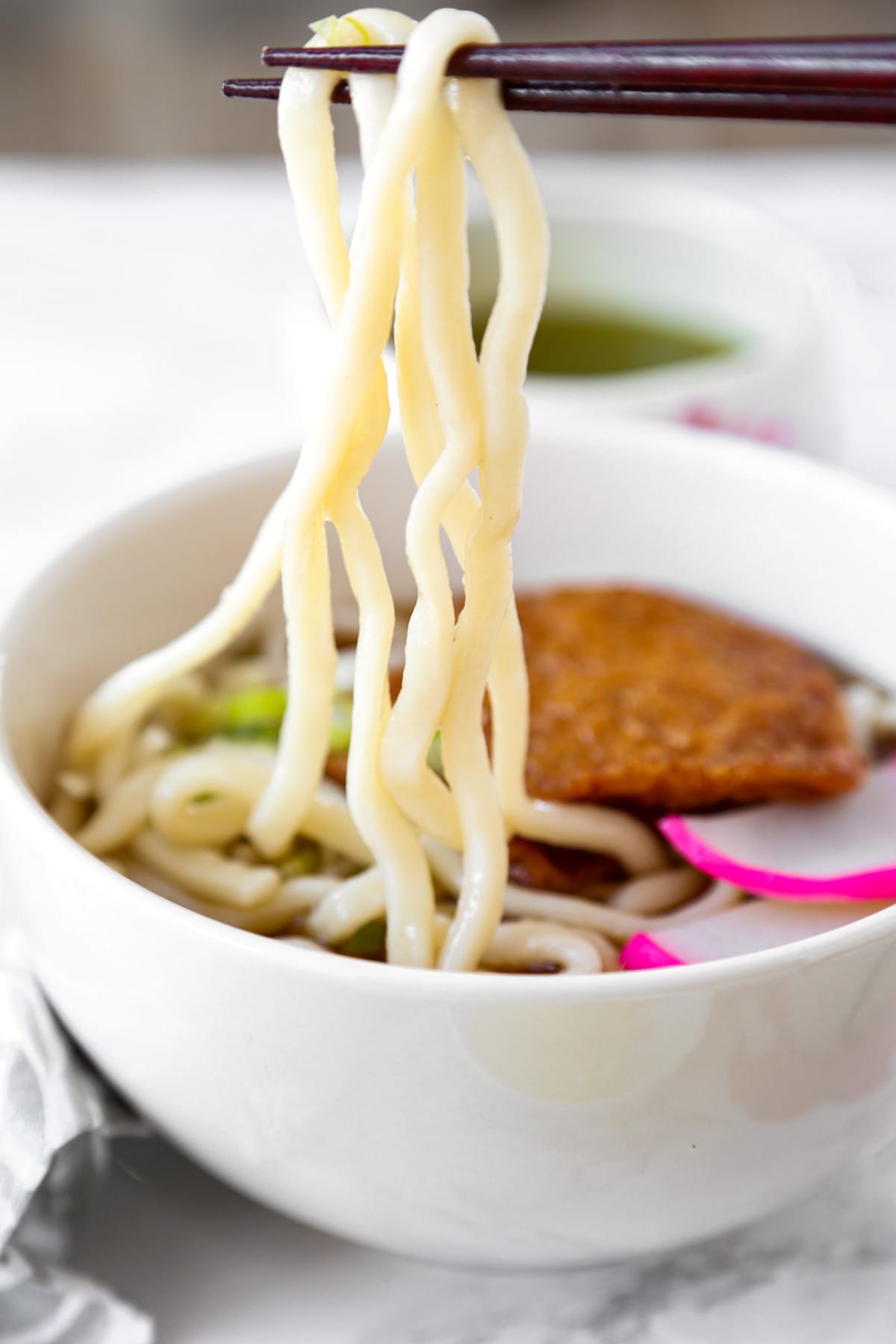
Did you like this Kitsune Udon Recipe? Are there changes you made that you would like to share? Share your tips and recommendations in the comments section below!
Print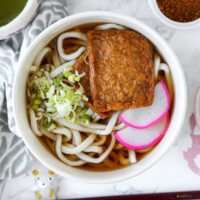
Kitsune Udon (きつねうどん)
- Prep Time: 10 minutes
- Cook Time: 3 minutes
- Total Time: 13 minutes
- Yield: 2
- Category: Soup
- Method: Stove top
- Cuisine: Japanese
- Diet: Low Calorie
Description
Kitsune udon is a traditional udon noodle soup served in a delicate, salty, and umami broth and is topped with sweet inari age pouches. It’s delicious, comforting, and only takes 15 minutes to make from start to finish!
Ingredients
- 2 packets fresh or frozen udon noodles, or 8 oz dry udon noodles
- 2 pieces inari age (seasoned deep fried tofu pouches)
- 2 scallions, finely chopped
- Narutomaki (fish cakes), optional
- Nori, optional
- Shichimi or ichimi togarashi (red pepper flakes), optional
- 5 cups dashi (or 5 teaspoons dashi powder mixed with 5 cups water) or kombu dashi for vegan version
- 1/2 cup water
- 2 tablespoons soy sauce
- 1 tablespoons mirin
- 1/2 tsp salt
- 3-inch piece kombu (dried kelp)
Instructions
- Mix all the ingredients for the dashi broth in a pot and let sit for 15 minutes. Bring to a boil and take the kombu out. You can discard it or cut it into strips and pan fry it with a little sesame oil and soy sauce. It makes a good side dish this way. Lower the heat to a simmer, cover, and cook for 5 minutes. Taste the broth and add a little salt if needed.
- Meanwhile, boil another pot of water and cook the udon noodles according to the directions on the package. Drain well.
- Divide the broth and noodles among two bowls and top with inari age, scallions, narutomaki, nori, and shichimi. Serve.
Notes
Vegan dashi
- Cut a 6″x 6″ piece of kombu and add it to a liter of water (4 cups).
- Let it soak for at least 3 hours or overnight for a stronger flavor.
- Take the kombu out and store your vegan dashi in a jar or container with a lid.
The broth can be refrigerated for up to 5 days.
Nutrition
- Serving Size: 1 bowl
- Calories: 482
- Sugar: 4.8g
- Sodium: 2390mg
- Fat: 7.2g
- Saturated Fat: 1g
- Unsaturated Fat: 3.6g
- Trans Fat: 0g
- Carbohydrates: 78.7g
- Fiber: 1.3g
- Protein: 16.2g
- Cholesterol: 0mg
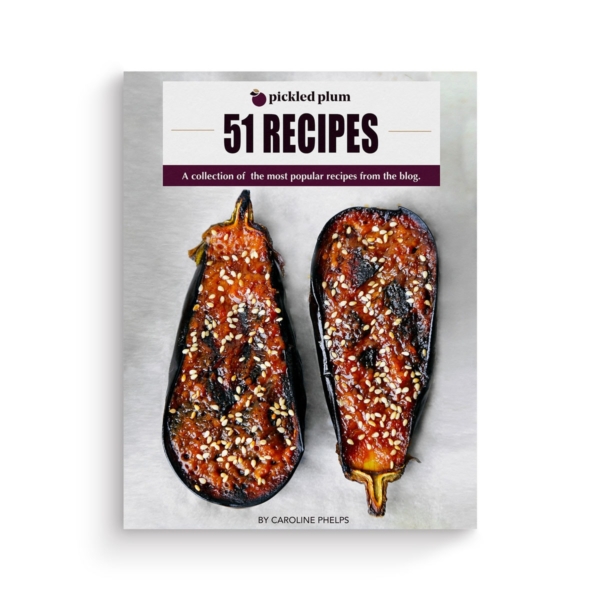

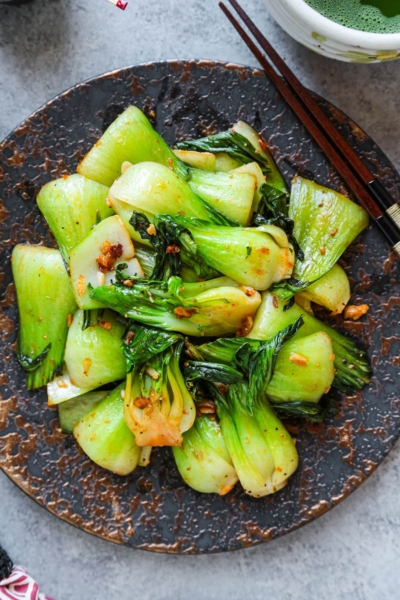
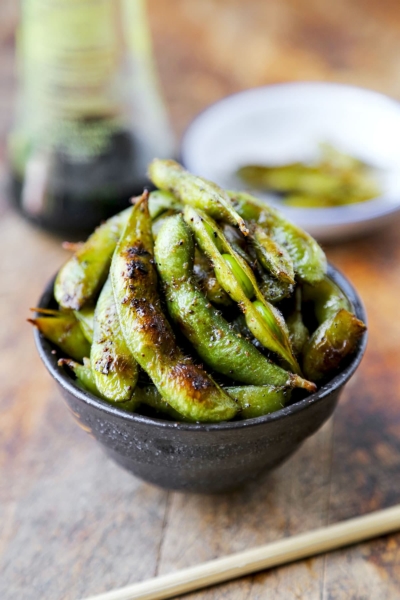
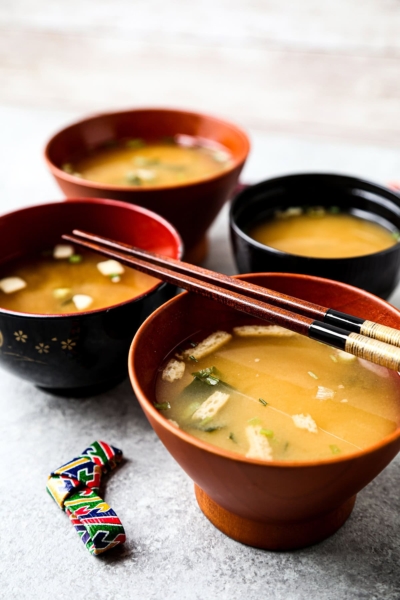
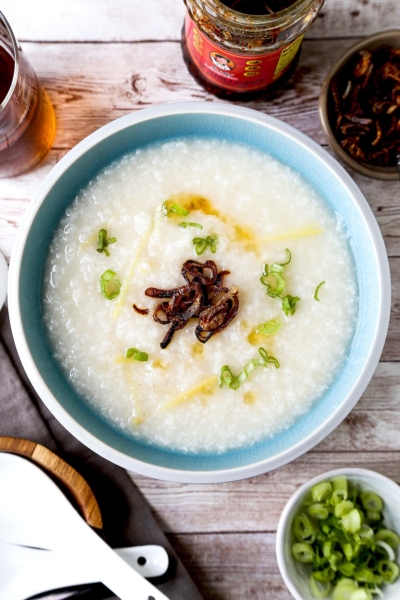









The Imari age recipe has no sugar in it !!
Good catch Christopher, it somehow didn’t make it when I published the recipe. It’s there now 🙂